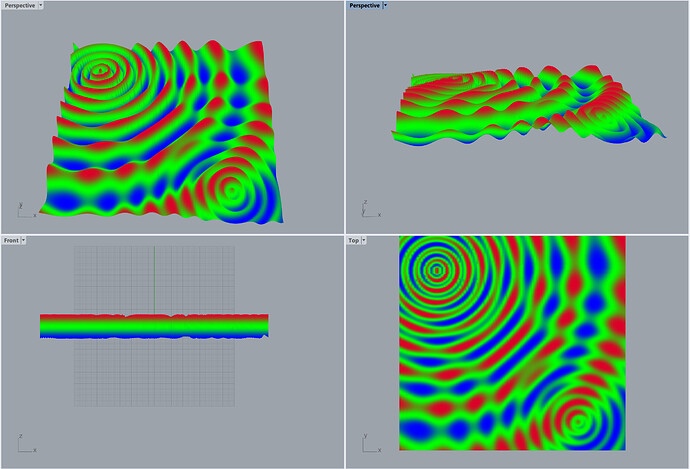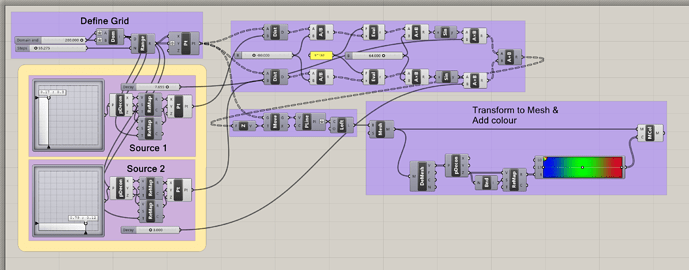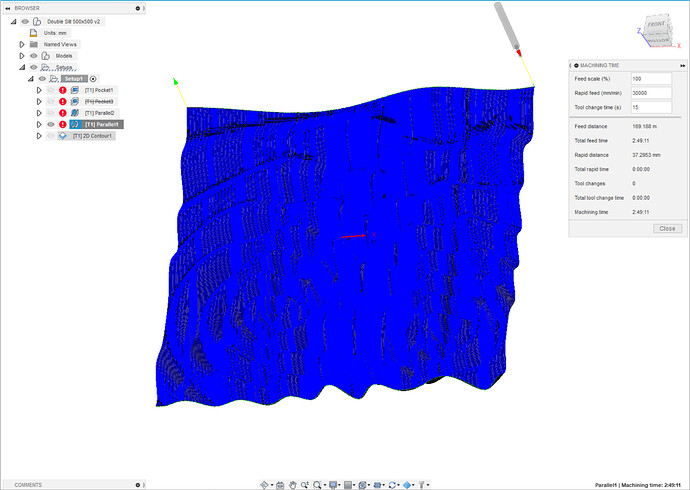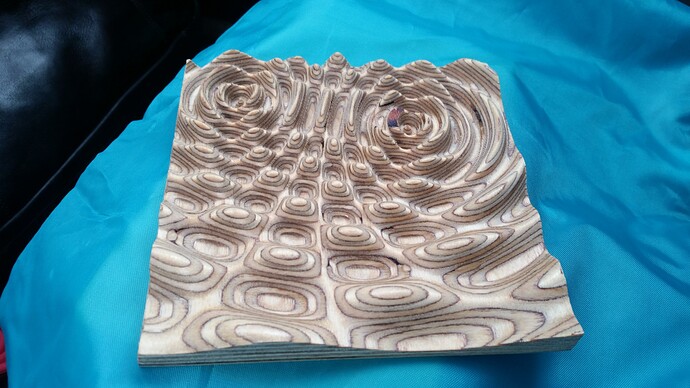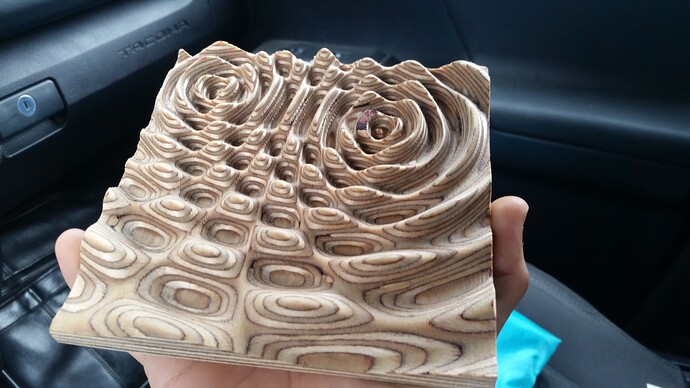Disclaimer right off the bat. I’m away from my machine for the past month or so, I made this a while ago as a way to make use of my R-1/16" ballnose bit.
Water waves trivet
So this project was the first Rhino project I’ve completed from scratch that wasnt from a tutorial/youtube video. It started as an attempt to model the double slit experiment from physics class, it wasnt until I added the coloured gradient on the amplitude that I had the idea to bring it the shapeoko.
Rhino is an artistic modelling program which excels in organic shapes/curves. It’s used in architecture a lot. The final model was slightly different than what is pictured below, I must have changed it a after the stl. export.
Grasshopper is a very powerful extension for Rhino that can generate incredible patterns algorithmically. Below is the visual code i used to generate this shape. The two point sources were weighted differently to make the pattern a little less symmetric You can see in the bottom left photo above that the peaks are all the same height, this would mean there is no friction or radial energy loss as the waves propagate, HUGE violation of the laws of physics. But this was necessary to hold the hot pans flat, sorry Newton  .
.
The final model measures 150mm x 150mm x 18mm. It was made of 19mm 12ply Baltic birch plywood. It took 10 mins for the roughing pass with a 1/4" endmill and 3 hours with a R-1/16" ballnose with a 0.5mm stepover. As you can see there seems to be variable step overs in the F360 tool path below, I don’t understand why some areas had more dense step overs but it didn’t hurt anything just took a bit longer.
Once complete I gave it 3 coats of Circa 1850 tung oil as that was the only finishing I had available that stood the slightest chance of standing up to the high temperatures fresh off the stove top.
You can see in the photos that there was a void in the plywood and unfortunately the upcut bit sent that piece flying in the abyss of sawdust and wires behind my machine.
I feel the plywood added a really cool topographic feel to to all and I’m very pleased with it on the whole. It protects the table well and holds up to the heat with no visible signs of wear or degradation. If I were make a larger piece for wall art I would make the waves a bigger and more sweeping, completely forgoing the plywood for a nice grain with with real character.
Cut Rocket available here
What do you think!?
